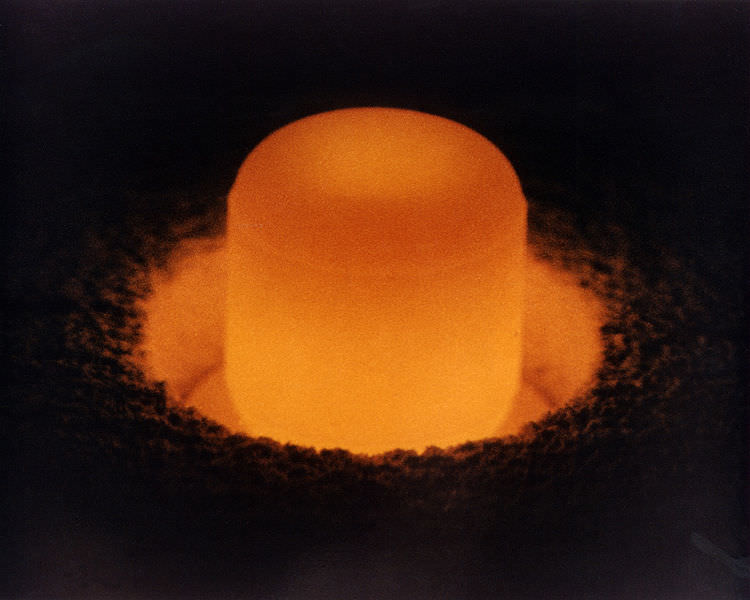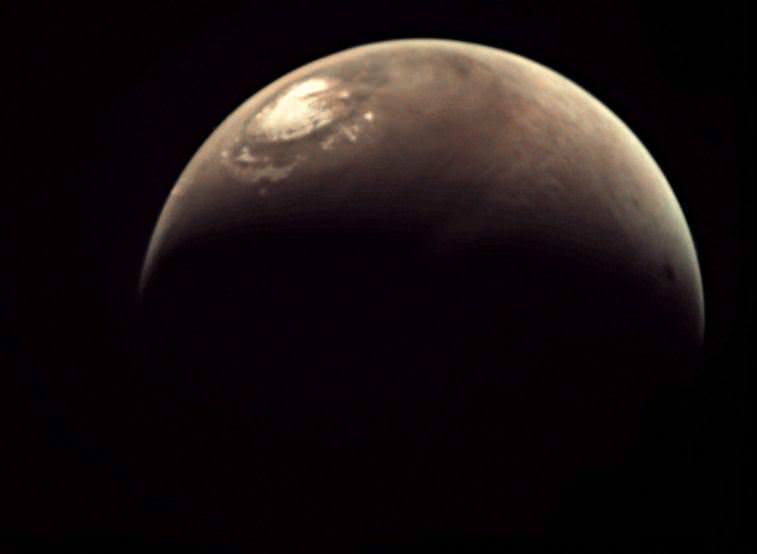One day – and it really is only matter of time – humans will set foot on the surfaces of other far-flung worlds in our Solar System, leaving the Earth and Moon far behind to wander the valleys of Mars, trek across the ice of Europa, and perhaps even soar through the skies of Titan like winged creatures from ancient legends. But until then we must rely on the exploration of our robotic emissaries and our own boundless imagination and curiosity to picture what such voyages would be like. Here in “Wanderers,” video artist Erik Wernquist has used both resources in abundance to visualize fascinating off-world adventures yet to be undertaken by generations to come.
Continue reading “This Short Film is a Stunning Preview of Human Space Exploration”
Imagine What Could Be Done With a “Penny4NASA”
If you’re reading this then you’re probably a big fan of space exploration. And while on one hand you could say that we are now living in a “golden age” of exploration, what with the ongoing missions there are around the Solar System and the new discoveries being made on an almost weekly basis about our Universe, on the other hand it seems like we are getting more and more “grounded” as human explorers, with still years to go before the first footprints are made on Mars, an ever-growing span since we last walked on the Moon, and steadily-shrinking or stagnant budgets that can’t support all the missions that DO exist — and sometimes cancel them altogether.
“We have discovered amazing places. But imagine what’s hiding where we haven’t even looked?”
In order for missions to ever get off the ground, they need to be funded. Right now NASA — still arguably the leader in space exploration among world agencies — receives a little over 0.4 percent of every U.S. tax dollar. Less than half a penny. That’s what NASA explores the Solar System with, what makes our knowledge of the Universe — from the farthest visible reaches right down to our own planet Earth — even possible. What if NASA were to receive a full one percent? A whole penny from every dollar? That’d still be only a quarter of what NASA worked with to put men on the Moon in 1969, but it’d be more than double what it gets now.
A penny for NASA… this is the goal of Penny4NASA.org, an outreach group that strives to increase the funding — if just by a little — of the world’s most accomplished, inspirational, and powerful space exploration administration. (Before… you know, it isn’t.)
The video above was created for Penny4NASA by artist and animator Brad Goodspeed, and reminds us of what NASA has achieved in its 50-year history, of what its goals are (or at least should be) and, unfortunately, why many of them have remained unattained. NASA needs support — our support — or else its candles will stay unlit and our windows and doors to the Universe will slowly but surely close.
How can you help? Well for one thing, stay excited about space and science (and get others excited too!) Interest is the key to making sure people don’t lose sight of what’s happening in the field; you might be surprised to hear the misinformation that’s been passed around. (No, NASA isn’t “dead.”) And let your policy-makers know that space exploration and the investment in technology and innovation that goes along with it is important to you — the Planetary Society has a convenient page where you can find links to write to your state representative here. And finally you can support groups like Penny4NASA, made up of enthusiastic young professionals who want to see our nation’s past successes in space exploration continued into their future.
“America is fading right now. Nobody’s dreaming about tomorrow anymore. NASA knows how to dream about tomorrow — if the funding can accommodate it, if the funding can empower it.”
– Neil deGrasse Tyson
Want more inspiration? Read this excerpt from Neil deGrasse Tyson’s Space Chronicles on TheWeek.com here.
Video credit: Brad Goodspeed/Penny4NASA.org
What Can You Do With a Cubesat?
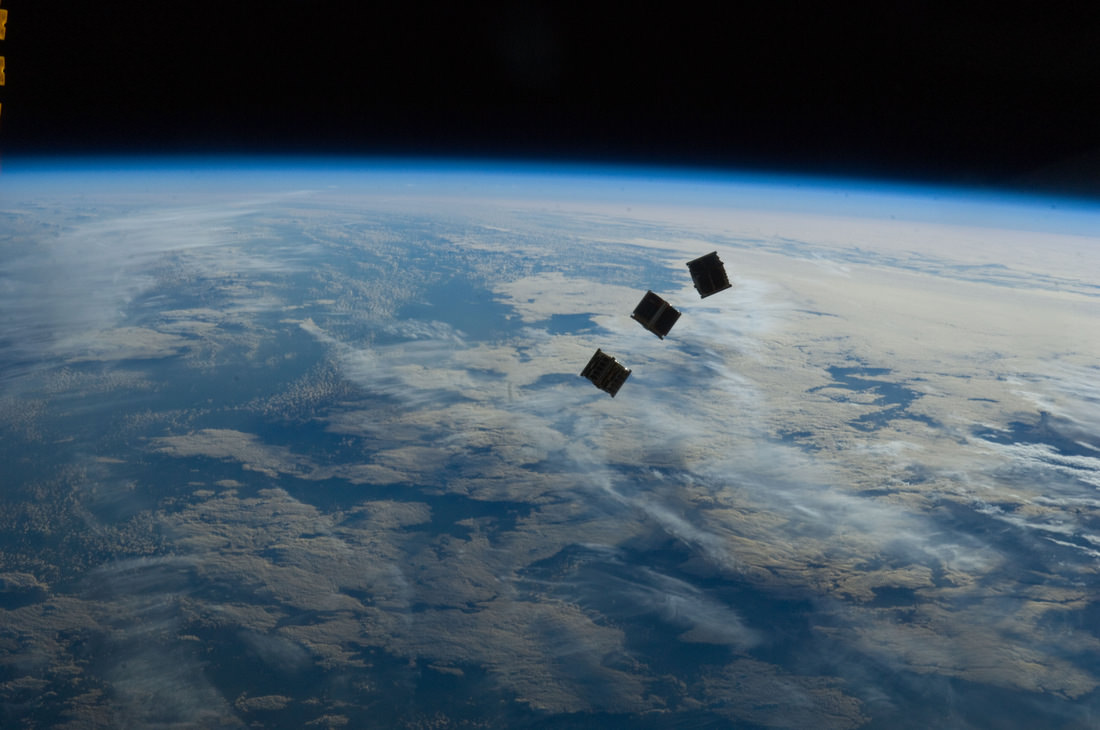
We’ve had several articles recently cubesats — low-cost satellites that seem to be the wave of the future. As technology becomes miniaturized, this allows for inexpensive and quick-to-build satellites. Additionally, they can tag along on launches already scheduled for other things. All this enables students and smaller companies to send equipment and experiments into space.
But the people from DIY Space Exploration say don’t let the small size of a cubesat fool you. The types of missions Cubesats can perform may surprise you and they’re becoming the satellite of choice for anyone looking for a low cost quick response option.
If you visit the DIY Space Exploration website, they have tutorials on how you can put your own cubesat together, and lots of other information. They’ve also put together a great infograhic about what all you can do with a cubesat:
Why are We Driven to Explore?
Why do we explore? Is it the desire to break through boundaries, or to probe the perimeters of possibilities? With his lightning-fast mind, self-professed wonder junkie Jason Silva can quickly list all the great quotes about space exploration and why it is important for the human species to explore; and he does it in this new video from his “Shots of Awe” series on You Tube.
Strap in and enjoy the fast ride that is Jason Silva!
Continue reading “Why are We Driven to Explore?”
Revolutionary New Space-Diving Suit Will Rival Anything You’ve Ever Seen In The Movies
Editor’s note: This guest post was written by Ron Atkins, a life-long supporter of human space exploration and an ardent advocate of “NewSpace” and Commercial Spaceflight. He curates and maintains “The NewSpace Daily” on Scoop.it
Tony Stark has been to a lot of cool places in that Iron Man get-up of his. But low Earth orbit might still be a bit beyond his operational flight envelope. Not so for the developers of the revolutionary RL Mark VI Space Diving suit. A hi-tech ensemble consisting of augmented reality goggles, power gloves, control moment gyros, and a low-cost commercial space suit, the RL Mark VI will allow future thrill seekers and space tourists an experience that up until now could only be imagined in the boldest science fiction.
A joint collaboration between Solar System Express and Juxtopia LLC., two minority-owned hi-tech startups both based in Baltimore, Maryland, the RL MARK VI Space Diving configuration will allow the well-equipped space tourist of the near future the opportunity to actually return to Earth without his spaceship.
Space diving is the next big step beyond sky diving, and it is envisioned as a concept that would allow spaceflight participants a means of escape from a possibly disastrous on-orbit emergency, or perhaps just a new recreational activity for those no longer satisfied with merely jumping out of aircraft. The RL MARK VI would allow high-altitude jumps from near-space, suborbital space, and eventually low Earth orbit itself.
The first few flight tests of the MARK VI hardware will follow a profile very reminiscent to that of the recent record-breaking Red Bull Stratos dive of Felix Baumgartner, where the daring aerialist completed his plunge through the stratosphere with a soft parachute touchdown back on terra firma. But the ultimate goal of this futuristic project is far more radical than that. Eventually, through the use of modern “wing suit” skydiving technology and assisted by miniature aerospike engines attached to specially designed footwear, the space diver will end his spectacular glide through the heavens with a propulsive, power-assisted landing on two feet. No parachute. At all. Just like Tony Stark does it in the movies.
In addition to Hollywood, the RL Mark VI also draws upon history for its inspiration. Major Robert Lawrence, United States Air Force, was America’s first African-American astronaut. Major Lawrence was killed on December 8, 1967 in a test flight at Edwards Air Force Base in California before his dream of flying in space ever came to pass. In his honor the principal design team at Solar System Express chose to use his initials for the product code name of this revolutionary new concept.
On October 2, 2012, the birthday of Robert Lawrence, Blaze Sanders, Chief Technology Officer of Solar System Express, ratified a licensing agreement with Dr. Jayfus Doswell, president and CEO of Juxtopia, for the use of Juxtopia’s Augmented Reality (AR) head mounted display technology.
Similar in functionality to Google Glass, Juxtopia’s AR Goggles are primarily intended to provide the space diver with a continuous stream of vital information that will keep him on course and within safe life-support parameters throughout the duration of his jump. These visually displayed real-time dynamic analytics will tell the jumper his heart rate, respiration, internal space suit temperature, and his external temperature as well. They will provide data on GPS location, elevation, and rates of acceleration and deceleration. An FAA radar display of the local airspace will always indicate his current relative position.
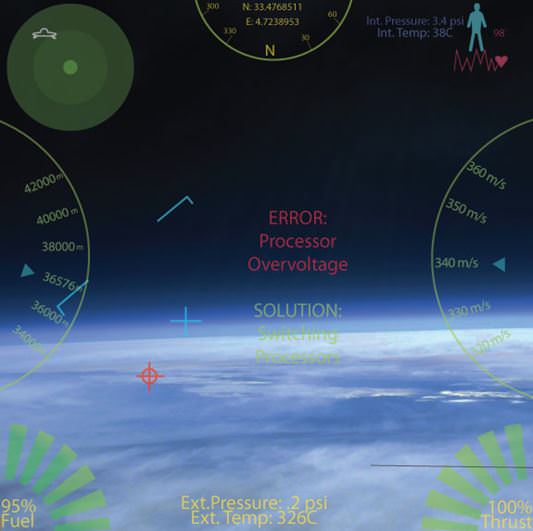
Unlike Google Glass there will be no video mode for these goggles. Instead they will work on the principal of “Optical See-Through,” much like the Heads Up Display on a modern fighter jet, that overlays numerical information and other visual symbology over the pilot’s view of the outside world. In the words of Dr. Doswell, “Video mode works fine for Hollywood, but in real life if you lose video during the jump then you’re flying blind and unlike in the movies there is no quick reboot option.”
The goggles will respond to voice commands specifically addressed to the name that the diver has designated for the RL MARK VI‘s system computer. Special software algorithms will filter the diver’s voice and eliminate all “false positives” such as wind, air, engine sounds and any other noise that is not human speech. The final result of this filtered audio signal is referred to as “pure speech.” Such audio commands will be used to turn the RL MARK VI’s systems on and off, to eject various hardware components from the diver’s body at different altitudes, to control suit cams and various lighting options, and to control voice communications to a ground control station.
In addition to voice commands, according to Dr. Doswell, “other human-computer interface modalities are being investigated for control of the MARK VI during its high speed decent as well.” Interfaces such as the electrical activity in your muscles harnessed by gesture control systems from MYO, and a distance only radio frequency sensor developed by Dr. Kuhlman at the University of Maryland, College Park, MD.
Modern fighter aircraft also employ specific audio outputs in cases of emergency or imminent danger. The MARK VI will be no different. Juxtopia is developing a culturally-specific system of programmable user preferences that will allow the diver to select his own audio alarms for any possible in-flight emergency and any other critical decision points such as altitude level or diminishing fuel state. This approach will help to enhance the international marketability of the MARK VI as well as ensure safety throughout the space dive for potential users from a variety of different cultures.
This video provides a taste of what space diving will be like:
Falling through the vacuum of space will be quite different than a dive that begins in the relative thickness of Earth’s lower atmosphere. There will be no aerodynamic forces acting upon the diver’s body that will allow him to stabilize his jump. This problem will be solved by a pair of gyroscopic boots and the fingertip controls built into the gloves of the diver’s spacesuit. Commands so issued to the control momentum gyroscopes built into his footwear will establish proper attitude and help to steady his fall through the airless void.
As a safety precaution a flat spin compensator will automatically actuate after more than five seconds if the diver is unable to maintain adequate manual control. As the diver descends through the upper atmosphere, eventually the air will thicken to the point where aerodynamic forces will allow him to control the attitude of his body. Olav Zipser, word-renowned skydiver and lead jumper on the FreeFly Astronaut Project, has praised the new suit. “Your product would be a great way to stabilize my decent during the first 30 seconds of free fall, when there is virtually zero atmosphere,” he said.

The final function of the diver’s gyroscopic boots will kick in as he nears the surface of the Earth, and he fires off his miniature aerospike thrusters to smoothly lower himself to the ground for a two-point upright landing.
Two different landing scenarios are presently under consideration: “a feet-down” landing where the aerospikes fire into action from an altitude of hundred feet, gently lowering the diver down to earth; and the much more daring and challenging “wing suit flare up” where the diver swoops within ten feet of pay dirt before pulling up sharply and then lighting off his thrusters to initiate his controlled descent to the ground.
Solar System Express intends to first test this propulsive landing capability somewhere around 2016, with a production model of the RL MARK VI coming to market about a year later. Until then any live tests of the system will conclude with traditional parachute jumps. Data collected during these jumps, along with rigorous control system testing and computer simulated recreations of each space dive, will enable Blaze Sanders and his team to refine the parameters and the protocols required for a text book propulsive landing.

Mounted on the front of the jumper’s space suit will be a “high intensity LED chest piece” powered by energy-storing super capacitors and equipped with miniature stereo cameras which will collect much of the data necessary for recreating the jump in a 3D computer simulation. When finally transferred to video all of this collected 3D data should easily yield the kind of YouTube upload that one can point to with pride for years to come.
The Gravity Development Board, a proprietary piece of hardware designed by Solar System Express, will serve as the main interface between the MARK VI’s three major components as well as the device which controls all critical systems.
According to Mr. Sanders, “The GDB will be the first space-rated open hardware electronic prototyping board, enabling any type of person to create space qualified hardware. The GDB will replace the Arduino Uno® as the preferred high-level prototyping environment, by being up to forty times faster, seventy percent smaller, having integrated high power drivers (capable of handling one hundred times the current), with more flexible Input/Output configurations, and yet be still much easier to program via 12 Blocks™, the powerful, intuitive visual language used for robotic programming. Engineers, artists, and designers are thus enabled to create any project they can imagine. Our quick release breakout board, the ‘Ejection Seat™,’ allows for easy prototyping, yet keeps the GDB form factor small and robust enough to use in New Space start-up product releases.”
Final Frontier Design, of Brooklyn, New York, is working with Solar System Express on a customized version of their low-cost Intra-Vehicular Activity IVA 3G spacesuit, first introduced to the public last year and successfully crowd funded through an online kickstarter campaign. The entire RL MARK VI ensemble, along with the 3G spacesuit and a protective thermal outer covering, will be put through a rigorous testing regime beginning in June of 2014. Ground based testing will commence with a series of thermal and vacuum chamber tests, and vertical wind tunnel tests to be conducted at the Goddard Spaceflight Center in Greenbelt, Maryland.
The protective thermal covering will be fashioned from lightweight layers of aerogel and NASA Space Shuttle-like flexible insulation blankets formed into a garment that will serve as the spacesuit’s outermost layer. This is the material that will protect the space diver from the heat of reentry as he plunges through the earth’s upper atmosphere. Solar System Express has already started conversations with several wing suit manufacturers interested in employing this revolutionary thermal technology into their product line.
The first tests at altitude should begin around July of 2016. They will commence with two-kilometer parachute jumps from a helium balloon-tethered tower that will comprise the major test platform of The LiftPort Group’s Lunar Space Elevator Project. Eventually near-space jumps from as high as 40 kilometers will be conducted by Olav Zipser and his FreeFly Astronaut Project using a specially modified rocket designed and manufactured by InterOrbital Systems of Mojave, California.
No firm dates have been set for suborbital and orbital testing but initial plans call for the use of a human medical robot prototype supplied by Juxtopia to be used as the test subject for these first jumps before real live space divers eventually become involved.
Blaze Sanders estimates the total development costs to bring the RL MARK VI to market at around $2.2 million. He has already invested about $100,000 of his own time and money into the project. In the next three years he expects to generate another $1.1 million dollars in revenue through sales of his company’s Gravity Development Board. He expects to generate additional revenue from a wide variety of sources including ongoing consulting fees, government grants and loans, angel investment, kickstarter campaigns, and technical consulting fees from motion picture productions already interested in the use of his technology, as well as a video game simulation also based on his revolutionary hardware.
Should he ultimately succeed then, who knows, one day he may end up just as rich and successful as Tony Stark himself. He’s already got the suit. And he’s prepared to take it to dazzling new heights.
For more information please visit www.solarsystemexpress.com and www.juxtopia.com. Read their joint press release at http://www.solarsystemexpress.com/press-releases.html
The Man Who Sold The Moon … And Other ‘Lunarcy’
One man claims to own the moon. Another promises to create effective lunar habitats. And yet another, a former astronaut, paints pictures of its surface.
Lunarcy! is a movie that chronicles our obsession with the Moon. It’s currently making the rounds at independent theatres, but before long it will be easy to watch it on cable, or even Netflix and Amazon.
The film chronicles the efforts of half a dozen people working, in their own way, to bring the notion of regular Moon exploration closer to reality. There’s Alan Bean, the Apollo 12 moonwalker who now paints scenes of lunar exploration. Or Dennis Hope, who has staked a claim on the entire Moon and has sold plots to interested homesteaders.
At the story’s center, however, is an ordinary man called Christopher Carson who is convinced he could be the first person to colonize the Moon — if he could only obtain enough money. Director Simon Ennis follows his efforts to get funds and awareness, sprinkling the rest of the movie with other lunar-loving people.
Universe Today caught up with Ennis, who answered our questions by e-mail.
1) What was your aim with filming/presenting Lunarcy?
As with any film, the aim is to make something that is entertaining, informative and moving. Something that can capture people’s imagination in some way.
2) Why is the moon so attractive to the people in you interviewed?
They all had different reasons. Some want to live there, some are inspired by it, for Dennis Hope (the man who owns it), he saw a business opportunity. Others are interested in space exploration in general and the Moon seems the most practical first step. Apollo astronaut Alan Bean has been there, so his attraction should be obvious.
3) One of your greatest challenges must have been trying to present some of the characters — people such as Christopher Carson, who has been ignored in his belief that living on the moon is possible — in a way that helps the audience feel understanding for their cause. How did you try to do that?
I don’t think that was much of a challenge actually. I only included subjects in the film who I felt a very strong affinity for, whose goals, quests or projects were ones that caught my imagination and that I could get behind myself. Considering that I felt understanding for the “cause”, I figured that would naturally come through to the audience.
4) A minor theme in Lunarcy! is presenting the moon as a viable place to do business — selling plots of land or colonizing it, for example. We also have companies that are looking to mine asteroids. But often, these plans meet with ridicule, as Newt Gingrich discovered when he promised a moon base. What, in your view, will it take for off-earth private ventures such as these to succeed?
I think they will ultimately succeed when they become financially viable industries. For that to happen, I suspect that some of the billionaire space enthusiasts (e.g. [SpaceX‘s Elon] Musk, [Virgin Galactic’s Richard Branson, etc) will have to invest their own funds to get various projects going and to show that they’re not only possible but viable. So far SpaceX seems to be doing just this.
5) What else would you like to add?
Lunarcy! will premiere on EPIX on April 3 and will be available on Netflix and Amazon at the beginning of July.
U.S. To Restart Plutonium Production for Deep Space Exploration
The end of NASA’s plutonium shortage may be in sight. On Monday March 18th, NASA’s planetary science division head Jim Green announced that production of Plutonium-238 (Pu-238) by the United States Department of Energy (DOE) is currently in the test phases leading up to a restart of full scale production.
“By the end of the calendar year, we’ll have a complete plan from the Department of Energy on how they’ll be able to satisfy our requirement of 1.5 to 2 kilograms a year.” Green said at the 44th Lunar and Planetary Science Conference being held in Woodlands, Texas this past Monday.
This news comes none too soon. We’ve written previously on the impending Plutonium shortage and the consequences it has for future deep space exploration. Solar power is adequate in most cases when you explore the inner solar system, but when you venture out beyond the asteroid belt, you need nuclear power to do it.
Production of the isotope Pu-238 was a fortunate consequence of the Cold War. First produced by Glen Seaborg in 1940, the weapons grade isotope of plutonium (-239) is produced via bombarding neptunium (which itself is a decay product of uranium-238) with neutrons. Use the same target isotope of Neptunium-237 in a fast reactor, and Pu-238 is the result. Pu-238 produces 280x times the decay heat at 560 watts per kilogram versus weapons grade Pu-239 and is ideal as a compact source of energy for deep space exploration.
Since 1961, over 26 U.S. spacecraft have been launched carrying Multi-Mission Radioisotope Thermoelectric Generators (MMRTG, or formerly simply RTGs) as power sources and have explored every planet except Mercury. RTGs were used by the Apollo Lunar Surface Experiments Package (ALSEP) science payloads left on by the astronauts on the Moon, and Cassini, Mars Curiosity and New Horizons enroute to explore Pluto in July 2015 are all nuclear powered.
Plutonium powered RTGs are the only technology that we have currently in use that can carry out deep space exploration. NASA’s Juno spacecraft will be the first to reach Jupiter in 2016 without the use of a nuclear-powered RTG, but it will need to employ 3 enormous 2.7 x 8.9 metre solar panels to do it.

The problem is, plutonium production in the U.S. ceased in 1988 with the end of the Cold War. How much Plutonium-238 NASA and the DOE has stockpiled is classified, but it has been speculated that it has at most enough for one more large Flag Ship class mission and perhaps a small Scout class mission. Plus, once weapons grade plutonium-239 is manufactured, there’s no re-processing it the desired Pu-238 isotope. The plutonium that currently powers Curiosity across the surface of Mars was bought from the Russians, and that source ended in 2010. New Horizons is equipped with a spare MMRTG that was built for Cassini, which was launched in 1999.
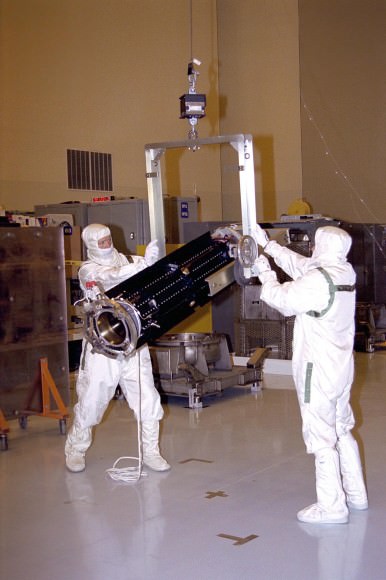
As an added bonus, plutonium powered missions often exceed expectations as well. For example, the Voyager 1 & 2 spacecraft had an original mission duration of five years and are now expected to continue well into their fifth decade of operation. Mars Curiosity doesn’t suffer from the issues of “dusty solar panels” that plagued Spirit and Opportunity and can operate through the long Martian winter. Incidentally, while the Spirit and Opportunity rovers were not nuclear powered, they did employ tiny pellets of plutonium oxide in their joints to stay warm, as well as radioactive curium to provide neutron sources in their spectrometers. It’s even quite possible that any alien intelligence stumbles upon the five spacecraft escaping our solar system (Pioneer 10 & 11, Voyagers 1 & 2, and New Horizons) could conceivably date their departure from Earth by measuring the decay of their plutonium power source. (Pu-238 has a half life of 87.7 years and eventually decays after transitioning through a long series of daughter isotopes into lead-206).
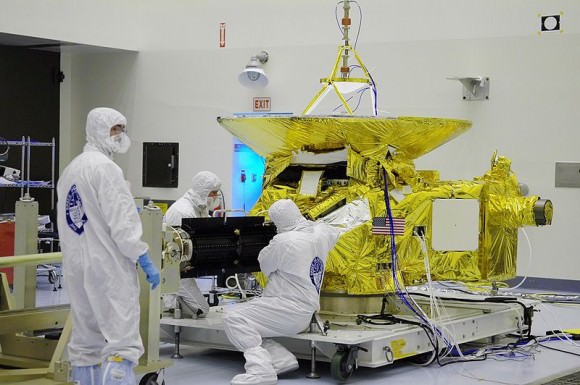
The current production run of Pu-238 will be carried out at the Oak Ridge National Laboratory (ORNL) using its High Flux Isotope Reactor (HFIR). “Old” Pu-238 can also be revived by adding newly manufactured Pu-238 to it.
“For every 1 kilogram, we really revive two kilograms of the older plutonium by mixing it… it’s a critical part of our process to be able to utilize our existing supply at the energy density we want it,” Green told a recent Mars exploration planning committee.
Still, full target production of 1.5 kilograms per year may be some time off. For context, the Mars rover Curiosity utilizes 4.8 kilograms of Pu-238, and New Horizons contains 11 kilograms. No missions to the outer planets have left Earth since the launch of Curiosity in November 2011, and the next mission likely to sport an RTG is the proposed Mars 2020 rover. Ideas on the drawing board such as a Titan lake lander and a Jupiter Icy Moons mission would all be nuclear powered.
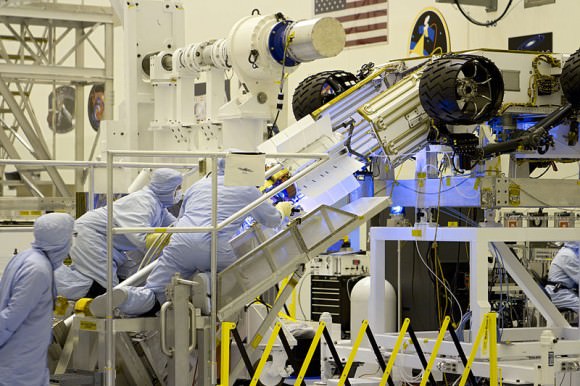
Along with new plutonium production, NASA plans to have two new RTGs dubbed Advanced Stirling Radioisotope Generators (ASRGs) available by 2016. While more efficient, the ASRG may not always be the device of choice. For example, Curiosity uses its MMRTG waste heat to keep instruments warm via Freon circulation. Curiosity also had to vent waste heat produced by the 110-watt generator while cooped up in its aero shell enroute to Mars.
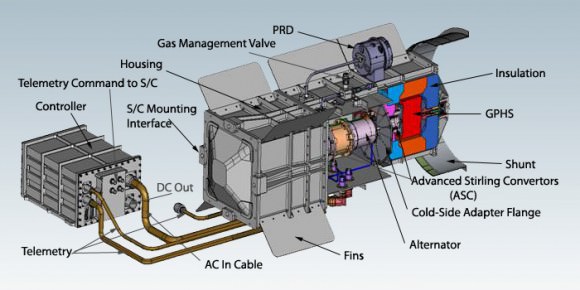
And of course, there are the added precautions that come with launching a nuclear payload. The President of the United States had to sign off on the launch of Curiosity from the Florida Space Coast. The launch of Cassini, New Horizons, and Curiosity all drew a scattering of protesters, as does anything nuclear related. Never mind that coal fired power plants produce radioactive polonium, radon and thorium as an undesired by-product daily.
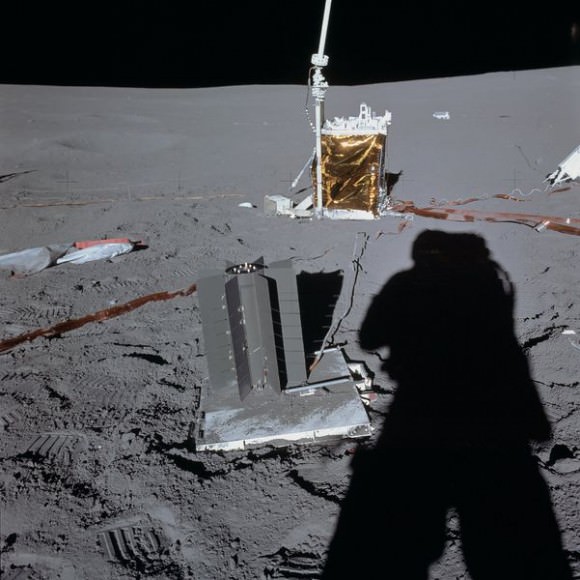
Said launches aren’t without hazards, albeit with risks that can be mitigated and managed. One of the most notorious space-related nuclear accidents occurred early in the U.S. space program with the loss of an RTG-equipped Transit-5BN-3 satellite off of the coast of Madagascar shortly after launch in 1964. And when Apollo 13 had to abort and return to Earth, the astronauts were directed to ditch the Aquarius Landing Module along with its nuclear-powered science experiments meant for the surface of the Moon in the Pacific Ocean near the island of Fiji. (They don’t tell you that in the movie) One wonders if it would be cost effective to “resurrect” this RTG from the ocean floor for a future space mission. On previous nuclear-equipped launches such as New Horizons, NASA placed the chance of a “launch accident that could release plutonium” at 350-to-1 against Even then, the shielded RTG is “over-engineered” to survive an explosion and impact with the water.
But the risks are worth the gain in terms of new solar system discoveries. In a brave new future of space exploration, the restart of plutonium production for peaceful purposes gives us hope. To paraphrase Carl Sagan, space travel is one of the best uses of nuclear fission that we can think of!
Dennis Tito Wants to Send Human Mission to Mars in 2018
According to a press release posted on SpaceRef and NASAWatch, Dennis Tito — the first-ever space tourist — is planning to send a human mission to Mars in January 2018 on a round-trip journey lasting 501 days. The trip would be timed to take advantage of the launch ‘window’ when Mars and Earth reach a position in their respective orbits that offers the best trajectory between the two planets.
Reportedly, Tito has created a new nonprofit company called the Inspiration Mars Foundation to facilitate the mission. The mission is intended to “generate new knowledge, experience and momentum for the next great era of space exploration.”
(2/21/13 13:00 UTC) We have an update on this news below:
Tito, along with several other notable people from the space community will provide more information in a press conference set for Wednesday, February 27th. Also at the press conference will be Taber MacCallum and Jane Poynter who were members of the Biosphere-2 project, and who are with the Paragon Space Development Corporation, which creates life-support systems, and Jonathan Clark, a medical researcher at the National Space Biomedical Research Institute, who may discuss the dangers from radiation to humans in deep space. The press conference will be moderated by journalist Miles O’Brien.
Tito paid about $20 million to visit the International Space Station in 2001.
Another endeavor, the Mars One project, wants to create a human settlement on Mars by 2023.
UPDATE: Spaceflight expert Jeff Foust did a some digging, and posted some insights about this story in his NewSpace Journal. Foust obtained a copy of a paper Tito plans to present at the IEEE Aerospace Conference in March, which discusses conference, a crewed free-return Mars mission that would fly by Mars – no going into orbit or landing. Such a 501-day mission would launch in January 2018, “using a modified SpaceX Dragon spacecraft launched on a Falcon Heavy rocket,” Foust writes. “According to the paper, existing environmental control and life support system (ECLSS) technologies would allow such a spacecraft to support two people for the mission, although in Spartan condition. ‘Crew comfort is limited to survival needs only. For example, sponge baths are acceptable, with no need for showers,’ the paper states.”
One of the paper’s co-authors is NASA Ames director Pete Worden, the paper outlines how NASA would also have a role in this mission in terms of supporting key life support and thermal protection systems, even though this is a private-sector effort. No estimates of what such a mission would cost are included in the paper, but it does say it would be financed privately. The paper adds that if they miss this favorable 2018 opportunity, the next chance to take advantage of this lower energy trajectory would be in 2031.
Read more in Foust’s NewSpace Journal.
We’ll provide more information when it becomes available.
Q & A with Astronaut Jerry Ross, Record-Setting Frequent Space Flyer

If there was a frequent flyer program for astronauts, Jerry Ross would be a gold status member. Ross is a veteran of seven space shuttle missions, making him a co-record holder for most spaceflights with fellow former NASA astronaut Franklin Chang-Diaz, and with nine spacewalks, he has the second most EVAs by a NASA astronaut. He is one of only three astronauts to have served throughout the entire Space Shuttle Program. Ross has written a new book about his life and career as an astronaut, “Spacewalker: My Journey in Space and Faith as NASA’s Record-Setting Frequent Flyer.” This is the first time he has told his story, reflecting on the legacy of the Shuttle program, its highs and lows, and the future of manned space flight.
Ross talked with Universe Today about his experiences and his new book. (Find out how you can win a copy of the book here.)
Universe Today: What made you decide to write a book about your experiences?
Jerry Ross: I wanted to share my experiences of what it was like to suit up to go out on a spacewalk and also help people understand what it is like to be an astronaut, that we are regular people who do regular work most of the time and only get to fly in space once in a while. In addition I wanted to entertain a little, use some funny stories that I had told many times to my friends when we were down at the Cape waiting for a launch, and a lot of times people would say, ‘those are great stories, you ought to write a book.’ After more and more people said that I started to take it a little more seriously.
Additionally I wrote it for my granddaughters who were young enough while I was still flying in space to not remember much, and in fact the youngest one was born after I had completed my flying. But probably the most important reason is that throughout my astronaut career I made a point that while I was talking with young students about their lives and what they could do with their God-given talents and capabilities, that they should dream large, study hard and work hard to reach their goals and not give up too easily. Throughout many of my talks over the years at schools, I have used my own career as a way of pointing out to them that, yeah, you are going to have some setbacks, your life won’t go in a straight line. You’ll have to study hard and work hard but you don’t have to be a straight-A student. And don’t give up too easily on what your goals are. I am one of the very fortunate ones who was able realize very early in my life what I wanted to do. I was able to set those goals and was able to achieve them, and what happened in my life was so much better than I could have dreamed about!

UT: You are obviously very dedicated to NASA. How does it feel to have the spaceflight records you have, and to have been a part the agency that is such an iconic part of America?
JR: The records are a byproduct of the what I said before; working hard and not giving up. I am and I was very dedicated to what our country was doing in space but I am somewhat frustrated that we are not doing more now. The records are quite frankly something that I wish I could have pushed much higher. I would have hoped to have flown many more times and done more spacewalks as well. Frankly, I’m disappointed that my records haven’t fallen and that those records aren’t continuing to be broken.
If we’re not continuing to push forward in space and do things more routinely and more aggressively, then as a country we are failing to be the leaders of the world that we should be in terms of leading humankind further into the Universe, learning more about the Universe and about ourselves, and potentially being able to live on other planets someday. While the records are nice — and it is kind of nice to put that in your bio that you hold the world record — it is not something that I hang onto, and like I said, I hope we will get back into a much more aggressive program that will push more people into space faster and farther.
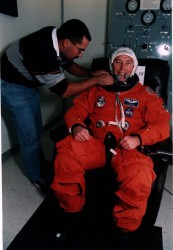
UT: Do you have a favorite mission or favorite moment that you cherish from all your spaceflights?
JR: That question is just like asking a mother which one of her seven children she likes best! Every one of my flights was unique and different. All of them were a lot of fun with great crews and great missions. If I had to pick one, it would probably be the first flight, just because it was my first. It was an exciting mission, a great crew and I got to go on my first spacewalk, which laid the foundation for even more spacewalks in the future. At the time I launched I was already assigned to another mission, so it was a great time in my career when I was still fairly young but was really starting to feel the success of all the hard work.
UT: What was the most unexpected thing or experience you had?
JR: I think the most unexpected thing — and I talk about it in the book — is the epiphany I had on my fourth spacewalk on my third space shuttle mission when I was high above the payload on a foot restraint on the end of the robotic arm. The rest of the crew was concentrating on working with (astronaut) Jay Asp who was doing some work in the payload bay. I had the chance to look into deep space. It was at night and I turned off my helmet-mounted lights and just looked at the Universe and the uncountable number of stars out there. And all of a sudden I had this sense come over me — it was totally unexpected, it wasn’t something I was thinking about or contemplating — but it was a sense that I was doing what God had intended me to do, being in space in a spacesuit, working to fix satellites and assemble things in space. What a reassurance that you picked the right path, and that you are doing exactly what you were intended to do!
For an engineer to have any feelings at all, and especially a feeling like that traveling at 5 miles a second above the Earth is pretty incredible.
UT: I really enjoyed the sidebar pieces in the book that were written by the people important in your life – your friend Jim, and your wife and children. How did you decide to include that, and did you have any trouble convincing them to be a part of the book?
JR: The book started out with John Norberg, my co-writer, coming down and doing a series of interviews with me and also with my family members and my best friend Jim Gentleman, and one of my two sisters in Indiana. Initially, John was going to write more of the book than it ended up being. It was a much more collaborative effort than I had anticipated. But those sidebars or insights from others was totally his idea and one that I entirely latched onto once we started writing. I think it is a great insight into the rest of the family and how we operated as a family. I’ve had this comment multiple times now from folks that these additional insights were especially enjoyable.

UT: Your daughter Amy also works at NASA, and has helped to create better gloves for spacewalking. How gratifying is that to have her be a part of NASA?
JR: I think any parent is pleased if one of their children decides to follow in their footsteps. I guess that somehow validates that what the parent has been doing was something they valued and thought was interesting and exciting. Amy was exposed to it and was never encouraged one way or the other to be part of NASA or not, so it was very satisfying to see her do that. It was equally gratifying for me for my wife Karen to get into the space program working for United Space Alliance as one of the support contractors, and as you read in the book she helped supply the food for the shuttle and the station.
You also might be interested to know that Amy was interviewed for the astronaut program in January. For this selection process they had around 6,000 people who applied and they narrowed it down to about 400 that they deemed most qualified, and from that 400 they brought in 120, and she made that cut.

They will further reduce the number down to about 50 that will be brought back in for a second round of additional interviews and screenings, mostly some fairly heavy medical testing, and then from that they will select about 10 or so in the middle of the year. So we are extremely excited for her and keeping our fingers crossed.
UT: You write in detail about the two shuttle accidents. How difficult were those two periods of time – both personally and for everyone in the astronaut office?
JR: It was a tremendous loss. The astronaut office is relatively small. At the time of those losses, we were in the neighborhood of about 100 people total, and you get to know folks pretty well. To have your friends doing what we all enjoyed and seeing them be lost and then learning that probably, had we been smarter or more diligent, we as an agency could have prevented both of those accidents. That is very hurtful.
You go through a lot of soul searching, especially after the Challenger accident when we were still very early in the shuttle program to lose a vehicle and friends that way. My family was still quite young and it makes you really do some soul searching about whether or not you should continue to do that and put your life and therefore your family at risk. We talked about it quite a bit as a family and fortunately we all agreed that it would be letting our friends down if we decided to pull out and go do something else.

UT: You mentioned this earlier, and you don’t mince words in the book about your disappointment with the direction NASA is going. Have your thoughts changed any about the SLS?
JR: No, I still think that the agency is wandering in the forest. Most of the direction that we are getting from Congress is the direction that reinstituted the SLS and is pushing Orion forward. The administration is really pushing the commercial space aspect, and it still makes me very nervous that the commercial space guys may not pan out. It makes me nervous that NASA won’t have more control and insight on what is going on with the vehicles, from both a safety and operational perspective. It makes me nervous that we are planning to rely up on them solely to get to and from low Earth orbit, when in fact if they have an accident either with one of our crews or theirs, it could precipitate a lawsuit, which might put them into bankruptcy. Where would we be then?
So there are lots of reasons why I don’t think this is the right answer. I totally agree with commercial space if they want to go spend their own nickel and go do things, that is fine. As a government agency I think we should provide all the help and assistance that we can, but at the same time I don’t think we should be diverting resources of NASA’s programs to be paying for theirs. And that is what we are doing right now.
If we had not stopped the Constellation program, we would be in the process of getting ready to go launch an Orion right now. So what we are doing is delaying progress for the nation and what is going to happen in respect to commercial space is not at all certain. I frankly do not see any business model that would keep any of those commercial systems operating without a great underwriting and usage by NASA. And so I don’t see the logic in what is going on.
UT: Your faith is obviously very important to you, and I recall the one line you wrote, that you find it impossible to believe that everything you saw from space was created without God. In some circles, it seems to be that it is either science or religion that the two are hard to mix. But you obviously have no problem mixing the two in your life.
JR: Absolutely. I have had no problems along those lines whatsoever. I think the problems come when people try to read too literally passages in the Bible, and to not to just accept God on faith. So, somehow I think people try to limit God by reading an exact passage in the Bible, in a certain kind of Bible, when in fact the passage would read quite differently depending on what kind of Bible you are reading.
UT: Is there anything else that you feel is important for people to know about your book or your experiences in general?
JR: I hope people will read the book and enjoy it, number one! Secondly I hope they will get a better understanding of what it takes to make a spaceflight happen. But probably the most important thing is that I hope that it might help young adults and school age children interested in science and engineering. But the main emphasis of the book is to set goals for yourself, study hard, work hard and don’t give up too easily.
UT: Jerry, its been an honor to talk with you! Thank you very much.
JR: I’ve enjoyed it, thank you!
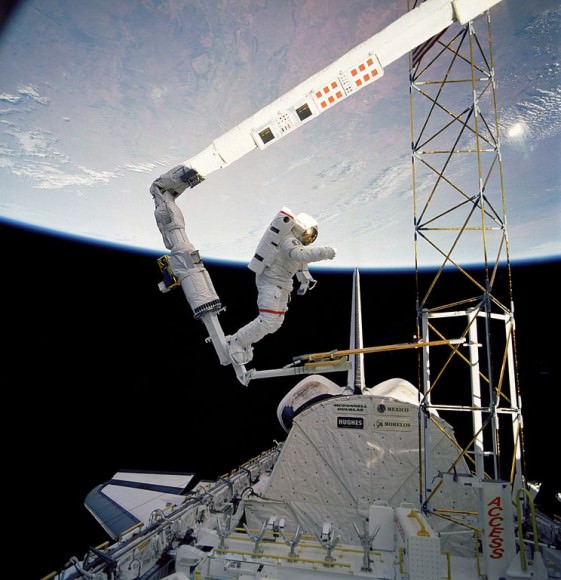
The Cost of Exploring Space: Film vs. Reality
We all know that space exploration, while certainly not the largest expenditure of most countries, doesn’t come cheap. But neither do big-budget science fiction films, either. Special effects, sets, special effects, popular acting talent… special effects… those all come with hefty price tags that make sci-fi and fantasy films costly ventures — although bigger definitely isn’t always better. If you were to compare the price of real space exploration missions (which provide actual information) to the costs of movies about space exploration (which provide “only” entertainment) what would you expect to find?
This infographic does just that:
“Prometheus’ movie budget would be enough to keep the search for real aliens going for another 52 years.”
Wow. (Maybe they should have just written a check to SETI.)
Infographic provided by Neo Mammalian Studios and paydayloan.co.uk. U.S.S. Enterprise © CBS Studios Inc. All Rights Reserved.





